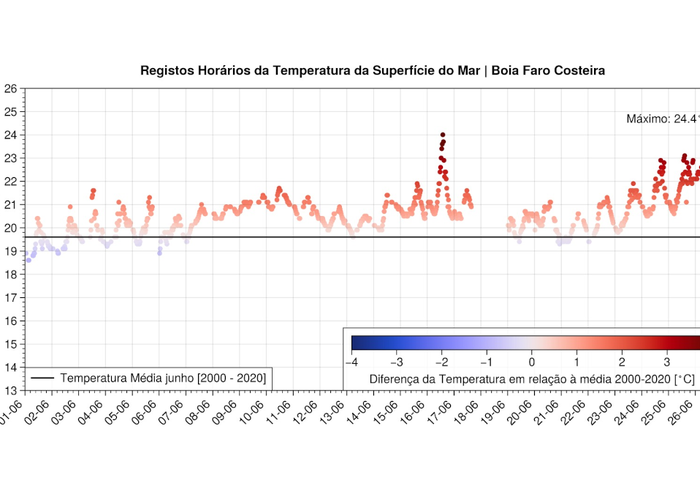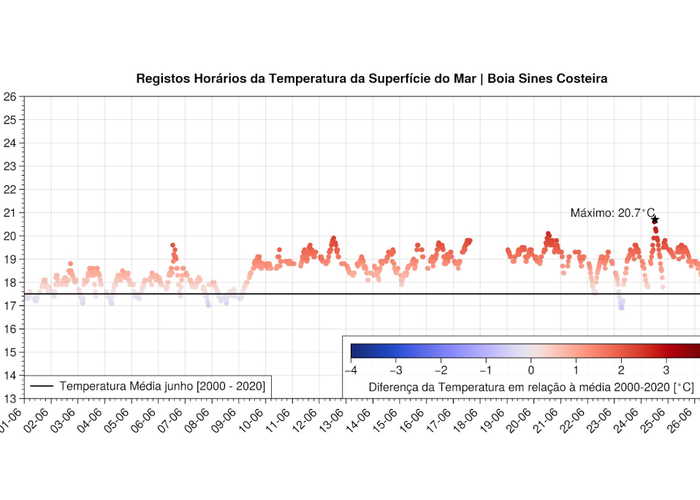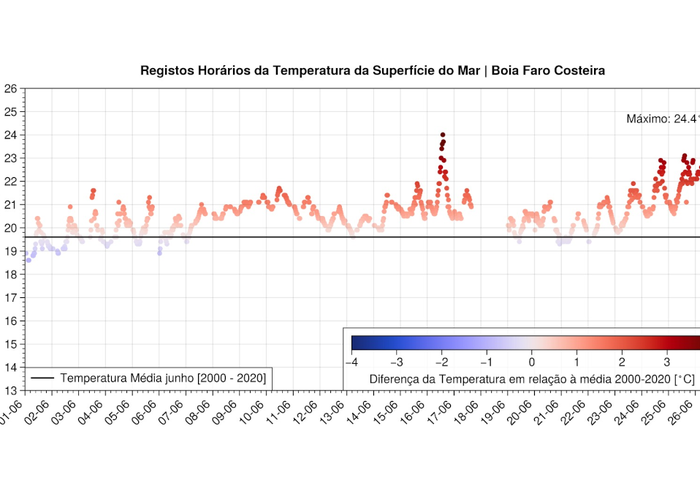The systematic observation, and for long periods, of the MONIZEE buoy network of the Hydrographic Institute (IH) makes it possible to calculate the average water temperature at the surface of the sea considering 20 years of observed data, thus guaranteeing greater confidence in the analyzes and studies made.In June 2023, an increase in the water temperature at the sea surface was observed, by the directional ondograph buoys located in Leixões, Sines and Faro, with temperature values above the average of the last 20 years.To date, the average values for June 2023, compared with the averages for the months of June in the period from 2000 to 2020, were as follows:. Leixões registers an average temperature of 18.9 °C this month, which represents +2.3 °C compared to the historical average (16.6 °C);. Sines registers an average of 18.6 °C this month, which represents +1.1 °C in relation to the historical average (17.5 °C);. Faro registers an average temperature of 20.6 °C this month, which represents +1.0 °C compared to the historical average (19.6 °C).The maximum values recorded in June 2023, compared with the averages for the months of June in the period from 2000 to 2020, were as follows:. Leixões recorded 21.0 °C on the 20th of June, which represents +4.4 °C in relation to the historical average (16.6 °C), but lower than the maximum of 22.4 °C, recorded on the 14th of August 2004.. Sines registered 20.7 °C on the 24th of June, which represents +3.2 °C in relation to the historical average (17.5 °C), but lower than the maximum of 23.1 °C, recorded on the 19th of August 2016.. Faro registered 24.4 °C on the 26th of June, which represents +4.8 °C in relation to the historical average (19.6 °C), but lower than the maximum of 26.6 °C, recorded on the 6th of August 2010.
Currently, the IH maintains in operation, within the framework of the MONIZEE system, a set of monitoring networks for the coastal ocean off the coast of mainland Portugal, namely in situ monitoring networks (multiparameter buoys, directional ondograph buoys, coastal tide gauge stations and coastal meteorological stations ) - which measure various oceanographic and/or meteorological parameters in the location where the measuring equipment is located - and remote monitoring networks (coastal HF radar stations) - which measure oceanographic parameters (current velocity and sea turmoil) of interest in areas adjacent seas.Consult the observations of the MONIZEE network at https://geomar.hidrgrafico.pt.








